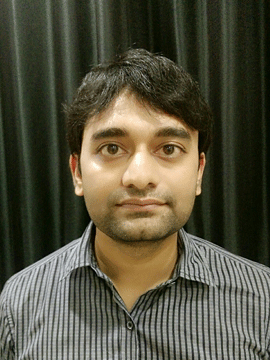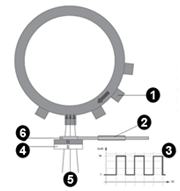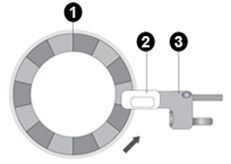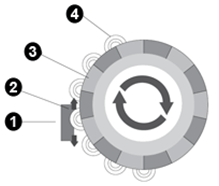Could you imagine a world in which all real world parameters are measured, monitored and managed with such ease that any sensing gadget always resulted in maintaining a perfect sensory system, at times beyond human senses? That world may be just round the corner.
A lot of applications have long used sensors (of one sort or another) to diagnose, manage and report information. In the last few years, however, sensors have become increasingly important as the devices and subsystems have become more sophisticated with the increase in demand for reliability, especially in safety critical applications. The advent of real-time data capture and analysis applications is making these new age sensors increasingly useful in a range of applications including Consumer Electronics, Automotive and in Industrial segments.
Get SMART in Sensing
The definition of a smart sensor may vary but typically at a minimum, a smart sensor is the combination of a sensing element with processing capabilities provided by a microcontroller. This essentially means that smart sensors are basic sensing elements with embedded intelligence. The sensor signal is fed to the microcontroller, which processes the data and provides an informative output to an external user. A more expansive view of a smart sensor system, which is used in this article, is illustrated in Fig. 1: a complete self-contained sensor system that includes the capabilities for logging and processing captured information.
- Sensing Element
- Signal Conditioning
- Data Conversion and Communication
- Host Micro-controller
Next Generation of Sensors address the sophistication demand from Industry by integrating vital components of a smart sensor on a chip, there by offering a controlled specification set across operation range of a sensor, optimizing power consumption specification a product may need and also making it faster and easier for product development. The fundamental idea of such a smart sensor is that the integration of sensor technology on silicon level can not only provide interpretive power and customized outputs, but also significantly improve sensor system performance and capabilities.
Let us have a look at how the Integrated Smart Sensors are changing the way legacy sensor solutions were developed. Texas Instruments has come up with a range of sensing devices and solutions which not only integrate the data conversion and communication sections of a Smart Sensor but also help in either eliminating the traditional sensing element or integrating it on-chip.
For instance, the Inductance to Digital converter family of devices from TI are changing the way speed, position, proximity and material sensing subsystems have been developed, specifically in Automotive and Industrial Applications. For Instance, a Wheel Speed Sensor typically employs either a Multi pole Ring Magnet and Hall arrangement or a MR Encoder and Magnet arrangement for measuring wheel speed in vehicles.
Existing Magnet / MR sensor plus Hall Element based Implementation methods for Wheel Speed Sensor
- Toothed wheel
2. Connector
3. Output signal
4. Permanent magnet
5. Magnetic field
6. Hall-IC
- Encoder (Multipole Ring Magnet)
2. Hall-IC
3. Housing
- MR Sensor
2. Changing Resistance
3. Encoder
4. Magnetic field
Proposed Inductive Switch Sensor completely does away with a costly Multi Pole Ring Magnet and utilizes the metallic wheel hub and PCB itself as sensor to measure Wheel speed. Inductive sensing utilizes LC tank resonance to identify presence of metallic teeth and valley as an object to switch between high/low state. Given the sensitivity, mounting, as well as temperature issues with magnets, new solutions make way for a reliable Non –Magnet approach and low cost implementation. Moreover, this technology is enabling placement of Control electronics remotely from location of sensing, thereby making it easier to operate the subsystem away from Noise environment. This technology is also being adapted for a whole lot of other position and speed sensing applications including Passenger Occupancy Detection, Seat Belt Buckle Detection and Gear Position Detection to name a few.
Sensing in Wearables
All of the advances being developed in Wearable technology will rely heavily on sensors in some way. The main components of the majority of devices can be divided into the main categories of energy supply and harvesting, sensor inputs, controller, actuator outputs and communication interfaces with other devices. Given the need to run a wearable on frugal energy available, integrated sensors with ultra low power consumption have become the need of hour for next generation Wearables. These sensing systems include measuring Humidity, Temperature, Ambient Light, Air Quality, Heart Rate Monitor, etc. to name a few. A whole lot of latest generation ultra low power sensor devices have been developed by TI which integrate these sensing elements and communicate the sensed data directly to the host MCU over a serial interface, making these ubiquitous for Wearable Applications. A whole lot of these Sensing Solution developments would also help explore new opportunities in IoT as a segment.
Smart sensor development potentially represents a new generation of sensing capabilities that are essential components of future intelligent systems. Driving intelligence down to the component level through the design of smart sensor systems, can and will have a profound impact on varied applications such as food safety and environmental monitoring, both locally as well as on a global scale. Areas shall also include health monitoring and medical diagnostics; along with industrial and aerospace applications. Some of these integrated sensors that have been developed would help resolve challenges that were not thought of, till date.
Author profile











